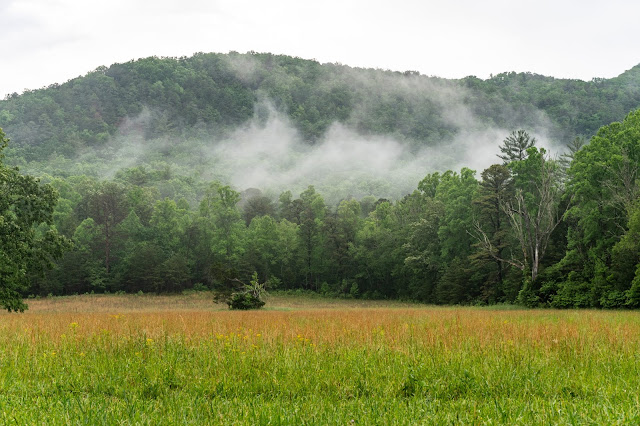History of Logging in the Smoky Mountains
We know the Smoky Mountains as foggy towering mountains with a thick forest. Did you know that before the Great Smoky Mountain National Park existed that most of the Tennessee side of the Smoky Mountains were barren? Here at Cades Cove Heritage Tours, we love the rich history of the mountains and we love to tell the stories. In this week’s blog, we would like to talk about the history of the logging industry in the Smoky Mountains.
Townsend quickly realized the Smoky Mountains were a gold mind. Townsend and his partners created the Little River Lumber Company and quickly had purchased 80,000 acres. Unlike earlier operations that relied on waterways to transport logs, railroads allowed large scale logging possible and could transport logs from previously inaccessible areas. This made the Little River Lumber Company the largest operation in the Smokies.
As you can see, logging was a huge part of history in the smoky mountains. By the mid-1930s W.B Townsend has sold most of his land to the state of Tennessee and this provided a large portion of the land for the Great Smoky National Park. Townsend, Tennessee is the home of Cades Cove Heritage Tours. If you love the beauty and history of the Smoky Mountains, you must take a tour with us. We offer guided public and private tours that allow you to experience the Smokies like you never seen before.
Early Logging Endeavors
The first logging operations in the Smoky Mountains began in the 1880s. The most well-known early loggers were the English Lumber Company on Little River, the Taylor and Crate on the Hazel Creek, and Alexander Arthur on the Pigeon River. These operations couldn’t reach the high forest ranges, so they focused on the low-lying areas along waterways. They used splash dams or booms to float logs down the rivers to get to the mills. The dangers of working on waterways were flooding, and all three companies failed after their operations were destroyed by flooding.Little River Lumber Company
Between 1901 and 1939 the Little River Lumber Company owned a large part of the Smoky Mountains. The Little River Lumber Company got its start by a gentleman named W.B. Townsend. Townsend was in the lumber business and he was invited to Tennessee by The England- Walton Company, who had a tannery in Walland, to check out the land for timber possibilities.Townsend quickly realized the Smoky Mountains were a gold mind. Townsend and his partners created the Little River Lumber Company and quickly had purchased 80,000 acres. Unlike earlier operations that relied on waterways to transport logs, railroads allowed large scale logging possible and could transport logs from previously inaccessible areas. This made the Little River Lumber Company the largest operation in the Smokies.
Ritter Lumber Company
The second-largest logging company was the Ritter Lumber Company. They operated along the Hazel Creek watershed between 1907 and 1928. You can still see the remnants of Ritter’s operation along Hazel Creek Trail. There was a couple more operation that operated along the Oconaluftee watershed. Their companies were Three M Lumber and Champion Fibre.Harvesting Trees on the Mountains
Most of the trees cut down in the Smokies were cut down the old-fashioned way. You had two men working together with a hand saw. Workers of these companies worked and lived with their families in communities built and owned by the logging companies. For most, the lumber business was a blessing and created jobs for many of the mountain people. By the time logging operations ceased in the 1930s, two-thirds of the virgin forest of the Smokies had been removed. This also caused the wildlife population in the mountains to drop to almost nothing in the 1930s.As you can see, logging was a huge part of history in the smoky mountains. By the mid-1930s W.B Townsend has sold most of his land to the state of Tennessee and this provided a large portion of the land for the Great Smoky National Park. Townsend, Tennessee is the home of Cades Cove Heritage Tours. If you love the beauty and history of the Smoky Mountains, you must take a tour with us. We offer guided public and private tours that allow you to experience the Smokies like you never seen before.
CADES COVE HERITAGE TOURS
865-448-8838
P.O. Box 268
Townsend, TN 37882-0268
info@cadescoveheritagetours.org






Comments
Post a Comment